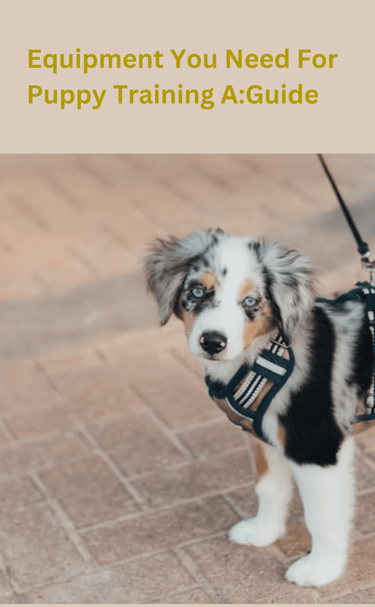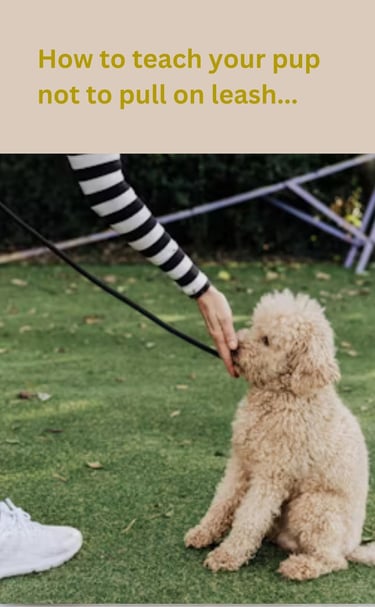A Comprehensive Step-by-Step Guide to Toilet Training Your Puppy
Housebreaking a puppy can be a challenging task, but with patience, consistency, and positive reinforcement, you can teach your furry friend to use the toilet


Understanding Your Puppy's Needs
Toilet training your puppy requires a comprehensive understanding of their natural instincts and typical bathroom habits. Puppies, much like humans, have their own set of needs and behaviors that influence how they learn to relieve themselves. Understanding these elements is crucial to create an effective training plan.
First, it is important to recognize that puppies have a strong instinct to avoid soiling their living environment. This instinct can vary among different breeds and age groups. Younger puppies, especially those below six months, typically have smaller bladders and less control, requiring more frequent bathroom breaks.
As they mature, their ability to hold in urine and feces gradually improves, aligning with their growth and development. Therefore, the age of your puppy should dictate the frequency of outings and your expectations during the toilet training process.
Establishing a routine plays a pivotal role in successfully training your puppy. By taking them out at consistent times each day—such as after meals, upon waking, and before bedtime—you can maximize the likelihood of success.
Puppies thrive on repetition and predictability, which helps them associate specific times and locations with bathroom needs. Moreover, actively monitoring your puppy's comportment can alert you to their need to go outside. Signs such as sniffing, circling, or whining can indicate that it is time for a bathroom break.
Patience and consistency are key components in aiding your puppy throughout the toilet training phase. Each puppy learns at their own pace, and setbacks may occur, particularly during environmental changes or increased stress.
Recognizing and respecting your puppy's needs can enhance your efforts, creating a more supportive and nurturing training experience. Remember, the goal is to encourage good habits while fostering a trusting bond between you and your puppy.
Setting Up a Training Schedule
Establishing an effective toilet training schedule is pivotal for ensuring your puppy learns the correct places to relieve itself. Puppies, particularly those aged between eight weeks to six months, have limited bladder control and require frequent bathroom breaks.
A general guideline is to take your puppy outside every hour, as well as immediately following meals, play sessions, and naps. This consistent routine helps to reduce accidents indoors and reinforces the desired behavior.
Feeding times play a crucial role in shaping your puppy's bathroom schedule. It is recommended to feed your puppy at the same times each day. By doing so, you can anticipate when they will need to go outside.
For instance, a puppy typically needs to eliminate within 15 to 30 minutes after a meal, making it essential to monitor the puppy's behavior during this period closely. By establishing predictability with feeding times, it enables pet owners to create a more structured training regimen.
Additionally, observing your puppy for signs that it needs to go outside is a fundamental part of effective toilet training. Common signals include sniffing around, circling, whining, or heading towards the door.
Recognizing these cues promptly allows you to take your puppy outside in a timely manner, reinforcing the idea that this is the correct place to relieve itself. Creating a training schedule that combines consistent bathroom breaks, mindful feeding times, and keen observation of behavioral signals forms a well-rounded approach in achieving successful toilet training.
As consistency becomes ingrained in your puppy's daily routing, the likelihood of accidents indoors diminishes. Over time, your canine companion will understand the importance of going outdoors for bathroom needs, thus streamlining the toilet training process and strengthening your bond with your puppy.
Effective Toilet Training Techniques
Toilet training a puppy requires patience, consistency, and the application of effective techniques. One of the most recognized methods is positive reinforcement. This approach encourages desirable behavior by rewarding the puppy when it successfully eliminates in the appropriate place. Rewards can range from verbal praise to small treats, creating a positive association with going to the bathroom outdoors or in designated areas.
Another effective method is crate training, which leverages a puppy's natural instincts to keep their living space clean. When using this technique, the crate should be a comfortable and safe haven for the puppy. The puppy should be confined to the crate for short periods, only long enough that it learns to hold itself.
When taken outside after being let out of the crate, it is essential to praise the puppy immediately after a successful bathroom break, reinforcing the understanding that outdoor elimination is desirable.
Moreover, it's crucial to designate specific outdoor spots for bathroom breaks. Consistently taking the puppy to the same location will enhance its understanding of where it is expected to go. The scent left behind will act as a cue for future visits. Timing also plays an essential role; take the puppy outside after meals, when it wakes up, and after play sessions to establish a routine. This consistency is often key for success, as puppies function well with predictable schedules.
While utilizing these techniques, remain vigilant and attentive to signs that your puppy needs a bathroom break, such as sniffing or circling. Each puppy has a unique personality, so be prepared to adapt training methods based on the individual dog’s response and breed characteristics. Tailoring the approach will not only enhance effectiveness but also foster a learning environment built on trust and understanding between owner and puppy.
Troubleshooting Common Challenges
Toilet training your puppy is a delicate process, and it is not uncommon for owners to encounter challenges along the way. Recognizing and effectively addressing these issues can significantly impact the success of the training.
One of the most prevalent problems is accidents indoors. It is essential to remember that puppies are still learning and may not yet have full control over their bladder. If your puppy has an accident, it is crucial to respond calmly, clean the area thoroughly to eliminate any residual scent, and reinforce outdoor bathroom habits gradually.
Another challenge pet owners may face is regression. This can occur when a previously trained puppy suddenly starts having accidents after showing progress. Various factors can contribute to regression, such as changes in the home environment, stress, or health issues.
In such instances, it is advisable to revisit the fundamental principles of toilet training and establish a routine that reaffirms desired behaviors, ensuring the puppy understands where it is appropriate to relieve itself.
Additionally, some puppies may exhibit a fear of outdoor environments, leading to reluctance in using the bathroom outside. This fear can stem from unfamiliar sounds or sights, making it crucial for owners to create a positive outdoor experience.
Gradual desensitization, providing encouraging vocal praise, and allowing your puppy to explore its surroundings can help alleviate this fear. It is also beneficial to take your puppy outside frequently, especially after meals or naps, so they have ample opportunities to learn that outdoor spaces are bathroom areas.
Adapting the environment according to your puppy's comfort levels can further aid in overcoming these challenges. Consistency in commands and routines will contribute to a smoother toilet training journey. As you navigate these potential setbacks, maintaining patience and demonstrating enthusiasm when your puppy successfully toilets outside is vital for their ongoing development and confidence.









